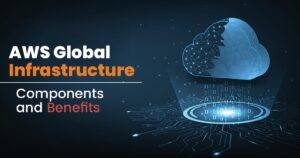
Top 10 Cybersecurity Skills for 2024
Introduction The recent Official Cybercrime Report projects that by 2025, the cost of cybercrime will have increased to £8.72 trillion. The cybersecurity industry is rapidly
Unlock the Power of FortiGate Mastery with Our Latest Release Fortinet Certified Associate – FortiGate Operator Course. Enroll Now!

Introduction The recent Official Cybercrime Report projects that by 2025, the cost of cybercrime will have increased to £8.72 trillion. The cybersecurity industry is rapidly

Introduction The Microsoft Power Platform Fundamentals Certification lets you grasp the core concepts and fundamentals required to start on Power Platform. To achieve this certification,

Introduction The demand for scalable, reliable, and secure cloud services has never been higher in today’s digital landscape. AWS Global Infrastructure is a beacon of
Table of Contents
The industry is still moving at a breakneck speed and is constantly changing. Service-oriented architectures have evolved from ubiquitous systems and structures, and Microservices are becoming more prevalent in these solutions today. Scalability is the primary driver of change, but there are other elements at play. In this article, we will learn about Terraform and Kubernetes and their differences.
If you are interested in beginning your career in Terraform and Kubernetes, IPSpecialist is considered the best place to start your journey. Check out our Courses NOW!
Terraform is a solution for managing infrastructure setup securely and efficiently. It provides users with a framework for designing infrastructure and enables resource providers to provide access to resources. The providers cover various notable public cloud platforms and Git hosting platforms, and general HTTP and FTP solutions.
Infrastructure as Code (IaC) is an essential notion to grasp to comprehend Terraform. HCL (HashiCorp Configuration Language) is a declarative configuration language for defining infrastructure resources in the tool.
Terraform users can use HCL to define their whole infrastructure in code, regardless of employing one or numerous infrastructure suppliers.
Terraform Kubernetes providers make it easier to work with Kubernetes-compatible resources. While tools like kubectl can be used to manage Kubernetes resources, Terraform unifies the workflow and provides complete lifecycle control.
Terraform includes commands like:
Terraform init — Creates a directory in which Terraform configuration files can be found.
Terraform plan — Generates an execution plan that includes reading the current state of objects to ensure they are up-to-date, comparing the system’s current state to the initial state, and proposing object changes to fit the defined configuration.
Terraform apply — Puts the proposed strategy into action.
Terraform destroy — Destroys items controlled by a configuration.
Kubernetes is a container orchestration technology for automating containerized software deployment, scaling, and management. Kubernetes allows distributed container systems to function without downtime by controlling groups of hosts structured in clusters.
Kubernetes works with clusters, groupings of machines called nodes integrated to make containerized applications easier to operate.
A Kubernetes cluster is composed of the following components:
The Kubernetes system is made up of two major components:

Terraform focuses on codifying resources needed by your applications, whereas Kubernetes is designed to automate container tasks.
Terraform uses the HashiCorp Configuration Language, or HCL, to define declarative objects. You can construct resources that run on different cloud platforms using an HCL file. On the other hand, declarative objects are defined by Kubernetes as YAML or JSON files that show how to define and manage Kubernetes objects. YAML is recommended over JSON in authoring configuration files because it is more user-friendly, but they can be used interchangeably.
Terraform’s CLI is a command-line interface that includes subcommands and switches like terraform plan and terraform apply. Terraform uses the CLI to execute and maintain declarative configurations to create any resource.
For handling container clusters and Kubernetes resources, Kubernetes offers its command-line tool, kubectl. kubectl can be used to create resources such as assigning memory and CPU to containers, building nodes, and deploying applications.
Terraform can be used for various jobs, but these are the most popular.
Terraform uses a state file to keep track of your deployed resources, which may be used as a point of reference for modifying the resources. Terraform can use a state file to figure out what changes to your infrastructure are required to match any desired end state.
Terraform is a platform that works with any cloud. To manage infrastructure resources distributed across various cloud providers, you can utilize a configuration file written in HCL, which takes care of cross-cloud dependencies.
When resources are distributed across cloud environments, they gain resilience and fault tolerance.
A workflow isolates features in multi-tier applications by specifying a specific logic to execute for each layer. Each tier is described as a collection of resources, and Terraform automatically manages the relationships between them. Dependencies and plugins must provide consistency between the tiers, which might be challenging to install manually.
Terraform provisioning ensures that these dependencies are always correctly deployed and applied. Terraform, for example, checks the database tier’s availability before creating the web servers and load balancer.
Terraform may work with Software-Defined Networks (SDNs) to autonomously configure a network based on the requirements of its applications. This allows you to go from a ticket-based to an automated approach, lowering deployment times.
Kubernetes can be used for various activities, and this section goes over some of the most common usage cases.
Kubernetes can host your container apps across numerous physical machines or cloud instances because it is platform agnostic. To achieve high availability, it additionally maintains a failover watch layer.
Running a single dedicated Kubernetes cluster is typically less expensive than running numerous separate servers. It is also easier to maintain a group like this than to manage many hosts running multiple servers.
Kubernetes support dynamic storage volume provisioning. Any platform, including local storage, cloud storage, and network storage, can be used to connect storage systems.
Terraform and Kubernetes are potent tools that can assist users in improving project lifecycle efficiency. So, which of these software platforms is the better fit for DevOps? To answer this question and choose the best product for your needs, keep in mind that these tools are meant to perform distinct duties throughout the application development lifecycle. As a result, their utility is determined by your requirements.
Terraform, for example, includes infrastructure creation and automation features that can be useful for customers that want to provision infrastructures periodically. Kubernetes, on the other hand, enables users to orchestrate their containerized applications, making it a superior choice for teams managing container workloads.
If each of these solutions appears to be a good fit for your DevOps operations, you can combine them to increase their capabilities.
Kubernetes is a container tool, while Terraform is an infrastructure tool. The difference in application and implementation allows developers to leverage both tools, resulting in a highly resilient system.
© 2022 All rights reserved | Privacy Policy | Terms and Conditions | Sitemap




